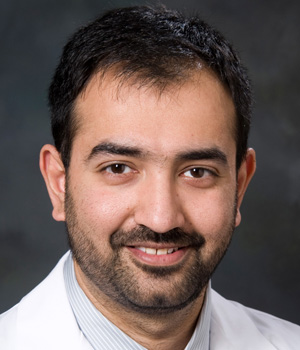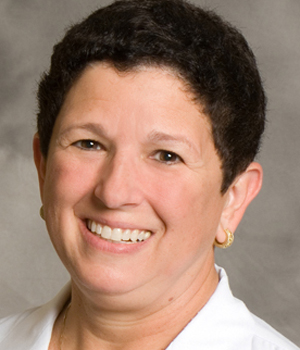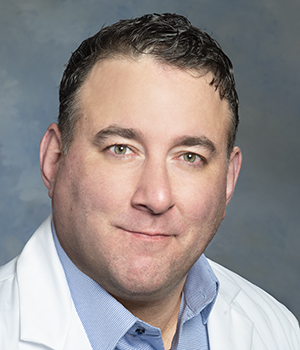Ventricular Assist Devices
Saint Luke's Mid America Heart Institute uses mechanical circulatory support including ventricular assist devices (VADs), or heart pumps, to support patients with intractable congestive heart failure.
We use VADs for patients:
- With reversible forms of heart failure—Surgeons can implant a temporary VAD to allow the heart to recover and then remove the device later. This is called bridge to recovery.
- Waiting for a heart transplant—VADs can support the heart while waiting for a donor heart to become available. This is called bridge to transplant.
- Who are not candidates for heart transplants—A new generation of heart pumps can support the heart for years, allowing patients to live independently. This is called destination therapy.
- Who might not benefit from a heart transplant—Surgeons implant a VAD to see how the patient's condition responds, helping them to decide whether the patient needs a transplant or the VAD. This is called bridge to decision.
Understanding Ventricular Assist Devices
Understanding Left Ventricular Assist Devices
A left ventricular assist device (LVAD) helps the heart pump blood out to your body. This device connects to one or both of the ventricles of your heart. A surgeon puts the LVAD in place.
Your heart has 4 chambers. The 2 upper ones are called the right and left atria. The lower chambers are called ventricles. An LVAD supports the left ventricle so it can pump out enough blood to all parts of your body. Some VADs are designed to also work with the right ventricle (RVAD) or both ventricles (BiVAD).
Other names for an LVAD are:
-
Mechanical circulatory support device
-
Mechanical circulatory assist device
Why you may need an LVAD
You may need an LVAD if you have advanced heart failure that does not get better with medicine or other procedures. Heart failure means your heart can no longer pump the amount of blood your body needs to work correctly. Your heart is too weak. Heart failure may happen if you have heart disease. Other health problems, such as diabetes and high blood pressure, can also damage and weaken the heart. An LVAD can help you feel better and live longer.
An LVAD can help you if you:
-
Have heart failure that doesn’t get better with medicine or other treatments. For example, cardiac resynchronization therapy (CRT). CRT is a special pacemaker that paces both sides of your heart to improve the flow of blood to the lungs and the rest of the body.
-
Have heart failure and are waiting for a heart transplant
-
Have heart failure but can’t have a heart transplant
-
Are recovering from heart surgery or a heart event, such as a heart attack
An LVAD can be used for a short period of time, such as a few days or weeks. Or it can be used for months to years. People who are recovering from a heart attack or some other heart problem may need it only until their heart regains strength. This is called bridge to recovery therapy.
If you are waiting for a heart transplant, you may need an LVAD until a donor heart becomes available. This use is called a bridge to transplantation. If you can’t have a heart transplant, you may use the LVAD as long-term treatment for your heart failure. This is called destination therapy. You may not be able to have a heart transplant if you have kidney disease, liver disease, hepatitis, cancer, or other health problems.
How an LVAD works
There are many kinds of LVADs. But they all work in much the same way. Some LVADs are used only in a hospital. Others can allow you to go home and resume many daily activities. Newer ones are smaller and more durable.
An LVAD has several parts. It has a pump, tubes, a driveline, a control unit, and a power source. In older versions, the pump was located outside the body or in the belly (abdomen) below the heart. For newer LVADs, the pump is placed inside the heart muscle from the outside and connects to the filling chamber on the inside of your heart. Or, the pump can be placed directly next to the heart. Tubes connect the pump to your heart, often to the aorta and to the left ventricle. These tubes direct blood from the pump through your heart out to the rest of your body.
A driveline, or cable, links the pump to the control unit outside your body. The driveline usually leaves the body several inches from the navel. The control unit is powered by batteries. Or you can plug it into a power outlet. The control unit can alert you to problems with the pump. You carry the control unit and batteries with you in a holster.
What to expect when you have an LVAD
An LVAD can help you feel better and be more active. It can also help you live longer. But living with an LVAD can be challenging. You will have to make some lifestyle changes. You will also need lots of follow-up care. Your care team will be there to help you manage this transition.
Once you have the LVAD, you will see your care team for periodic checkups. You will need to take medicine to prevent blood clots. You will also need regular testing to check your health and the condition of the LVAD. You will have to do daily maintenance on the LVAD and its parts. These activities may include:
-
Cleaning and checking the equipment
-
Recording LVAD data and your vital signs, such as blood pressure
-
Checking that the batteries are charged
-
Changing the dressing around the driveline
With an LVAD, it’s also important to focus on living a healthy lifestyle. You need to limit salt and eat foods good for your heart. A nutritionist can help you stick to a healthy eating pattern.
After you recover from surgery, physical therapy or cardiac rehab can help you regain or build strength. Regular exercise can keep you active longer. But you’ll need to not do certain activities. These include activities that would get your driveline wet or submerged under water, such as swimming. You also may not be able to drive for some time.
Becoming a Patient
Saint Luke’s believes patients and families should be active participants in the mechanical circulatory support process. Our team of professionals will provide you with education and resources you'll need to navigate your journey with a ventricular assist device—from the preoperative evaluation to many years of follow-up care.
Evaluation
The evaluation includes a series of tests and exams to make sure you're free of other serious problems that would limit the success of your life with a mechanical circulatory support device.
We also consider alternatives to mechanical circulatory support, such as:
- Heart transplant
- Coronary revascularization
- Valve repair and replacement
- Ventricular remodeling
The evaluation includes meetings with a:
- VAD nurse coordinator
- Cardiologist
- Surgeon
- Social worker
- Psychiatrist, psychologist, and/or psychiatric nurse practitioner
- Pulmonologist
- Infectious disease specialist
- Oral surgeon or dentist
- Dietitian
- Chaplain
- Your primary care doctor
Requirements
Before receiving a ventricular assist device:
- Women must have an up-to-date pap smear and mammogram.
- Men must have an up-to-date PSA (prostate screening test) and a prostate exam.
During the evaluation, we'll also assess your willingness to take an active role in your health care. This is vital for your recovery and success after surgery.
Based on your medical history, you may need to see other doctors, including:
- Endocrinologist
- Ophthalmologist
- Nephrologist
- Gastroenterologist
- Neurologist
Frequently Asked Questions
When is a VAD needed?
Ventricular assist devices are considered when the heart can no longer work well and you’re at risk of dying. Reasons that a person may need to be considered for VAD include:
- Inoperable coronary artery disease
- Dilated cardiomyopathy (enlarged heart)
- Congestive heart failure with recurrent hospital admissions
- Unstable angina
- Ventricular arrhythmias that medication or a defibrillator cannot control
- Adult congenital heart disease
- Hypertropic or restrictive cardiomyopathy
- Inoperable valvular heart disease
The heart may be irreversibly damaged by multiple heart attacks or a viral illness that affects the heart muscle. Regardless of the reason, implantation of mechanical circulatory support can dramatically improve a person’s life expectancy and quality of life.
What tests are part of the VAD evaluation?
The VAD team will review all of your previous medical records, as well as cardiac catheterization films and operative reports. They may request:
- Echocardiogram
- Catheterization of the right heart
- Cardiopulmonary stress test
- Pulmonary function tests
- Blood tests
- Carotid and peripheral vascular testing
- CT scan of chest
Once all tests are completed and you’ve met with all team members, the team will review your results and decide whether you’re a candidate. You will be notified that you’ve been accepted, denied, or deferred. If you’re accepted for VAD, the coordinator will work with you for an implant date.
How are candidates for VAD determined?
For a destination therapy VAD, heart transplantation has been ruled out as an option. Through the evaluation process, patients who have the best chance at long-term survival and doing well are selected. The evaluation is performed by a variety of specialists to determine whether VAD is the best treatment. Following the implant and your discharge, you must have an identified caregiver who can be with you until it is safe for you to manage on your own.
What happens during the operation?
The surgical procedure to implant the VAD will be done using standard surgical procedures and care. The procedure will take on average between four and six hours to perform. The anesthesiologist will see you before your surgery to talk about risks, possible complications, and benefits of anesthesia.
After you are taken to the operating room, it will take about half an hour until you are given general anesthesia. This half hour will be spent getting you ready to receive your VAD. You will have a breathing tube (endotracheal tube) and be under general anesthesia for the duration of the operation. After you are asleep, the VAD team starts your surgery.
- An incision is made down the center of your chest and abdomen and the breastbone is opened.
- You will be placed on the heart-lung machine.
- Connections for an LVAD will be sewn onto your aorta.
- They will then be attached to the VAD or brought out through your skin to be attached to the VAD.
- If you require a right ventricular assist device (RVAD), the device will be attached to your pulmonary artery.
- During your surgery, your family will be updated about your progress. It will be about an hour before the nurse will call your family to come see you.
What happens after the operation?
Once the surgery is complete, you will recover in the Cardiovascular ICU for two to three days. When you’re ready, you’ll be transferred to another unit called a step-down unit. The usual length of stay is 14 to 18 days. If you experience complications, you may be there longer.
Learning how to care for your VAD begins as soon as you have recovered from the anesthesia. You will learn how to monitor your blood pressure, pulse, and weight. You will also learn the signs and symptoms of infection, and when to call your transplant team.
It is important that your family participate with you in learning about your VAD.
What complications could happen after receiving a VAD?
The two most common complications are infection and bleeding.
What happens when I go home?
VAD patients need follow-up medical care for the rest of their lives. Stay in touch with your Saint Luke’s VAD team; it’s critical to your long-term success. Before you leave the hospital, you’ll be scheduled for an appointment with our clinic.
Why do I need a caregiver?
You will need a 24-hour caregiver following discharge from the hospital. You may not stay alone after you have received a VAD until you are deemed independent by the Saint Luke’s Hospital VAD team. You may need indefinite, ongoing support from your caregiver, including dressing changes and care for you and your device.
Your caregiver(s) will be required to attend training sessions at Saint Luke’s Hospital of Kansas City, which will occur during—and possibly prior to—your hospitalization. These sessions occur on weekdays.
You will not be allowed to drive until you are deemed safe to do so by the Saint Luke’s Hospital VAD team.
Does Saint Luke’s offer support services?
Saint Luke's provides various support group meetings throughout the year for our VAD patients waiting for transplant, as well as those who’ve already undergone the procedure.
Educational opportunities and support gatherings are scheduled periodically throughout the year.
Financial Questions
What should I do if my insurance changes?
Call us before the changes happen. We can help you make decisions that may affect your coverage. And call us any time you have questions or concerns regarding disability or overall financial coverage.
What do I do if I don’t have medical coverage?
It’s critical that you never lose your medical and prescription coverage.
When should I apply for Social Security?
In most cases, you’ll want to apply for Social Security when you become disabled. However, contact your financial specialist before applying. For those receiving Social Security for disability, Medicare will not begin for two years after the qualifying date of coverage.
When is Medicare my primary insurance coverage?
For those patients who are covered for disability, Medicare will remain secondary if you’re enrolled in a large, active group employer plan through yourself, a spouse, or a parent. Medicare will be your primary coverage if you’re covered by an individual, small group, retired, or COBRA plan.
How much does a VAD cost?
We’ll help you determine how much is covered by insurance and how much is your responsibility. We’ll work closely with your insurance case manager to coordinate your benefits.
Providers

Bethany A Austin, MD
Mark P Everley, MD

Jessica K Heimes, DO

Andrew C Kao, MD

Taiyeb M Khumri, MD

Stephanie L Lawhorn, MD
Anthony Magalski, MD

Sean D McCarney, MD
